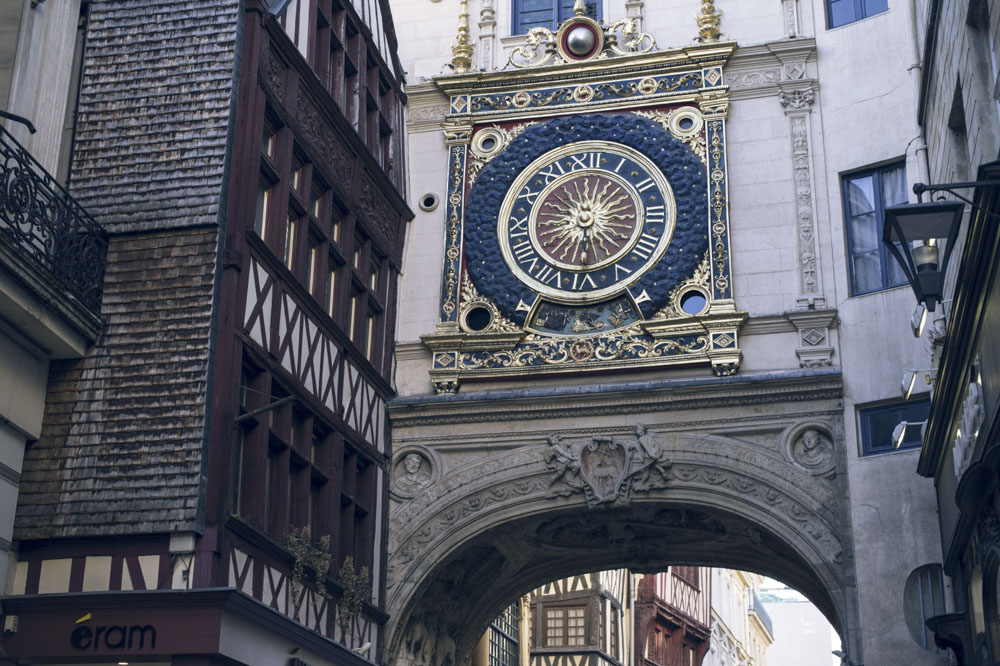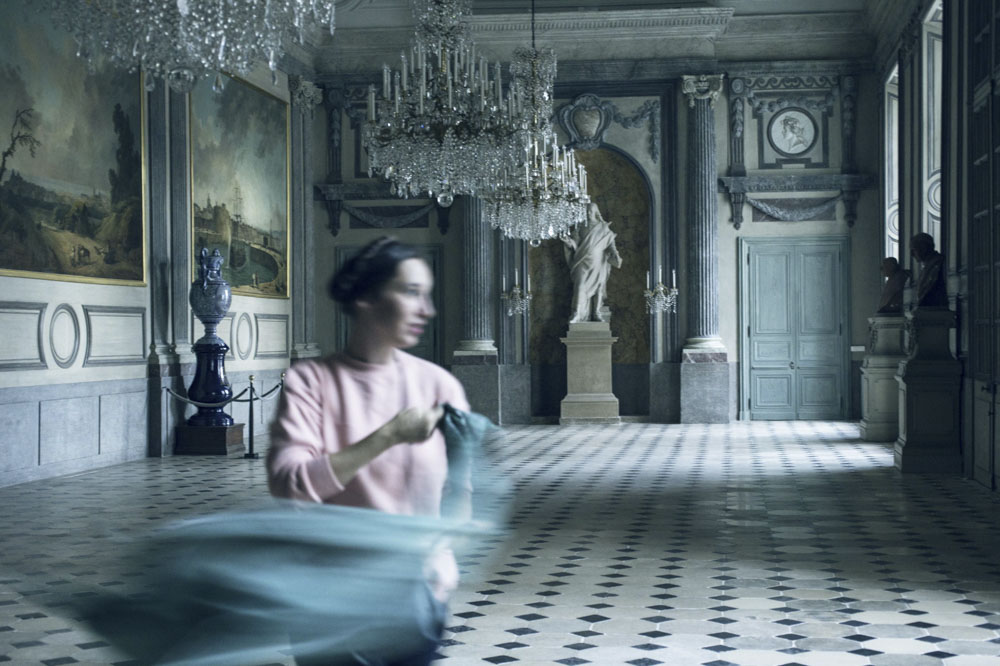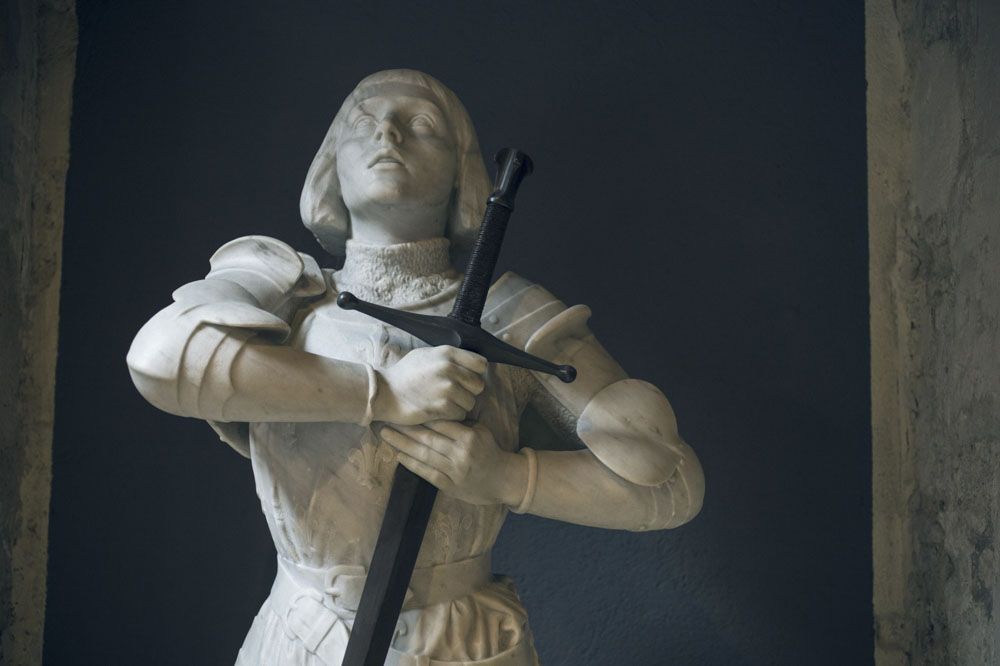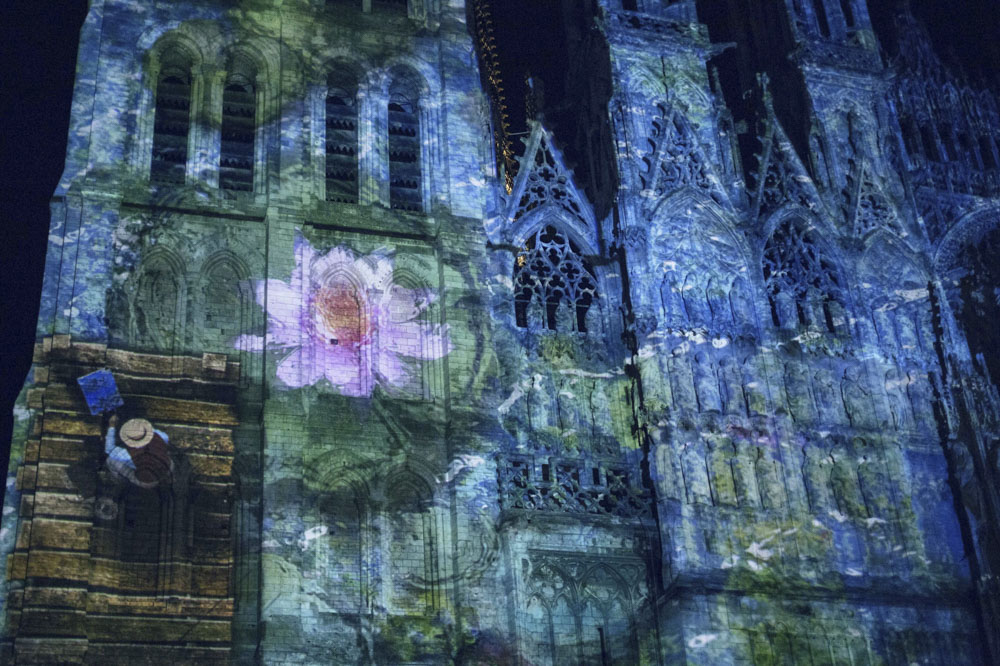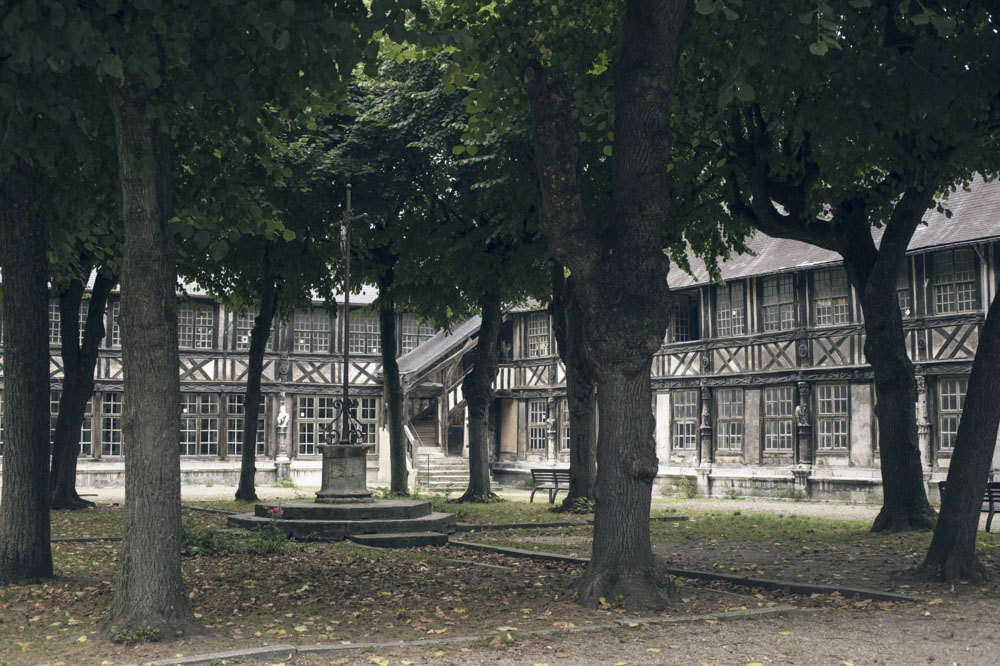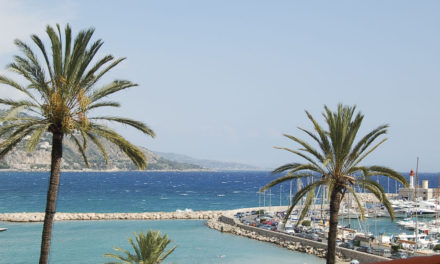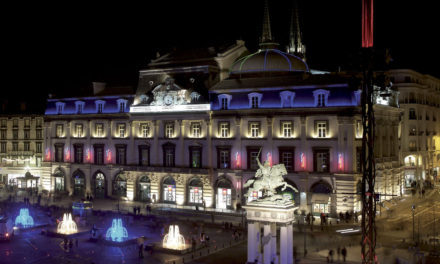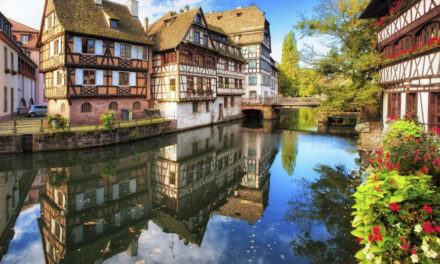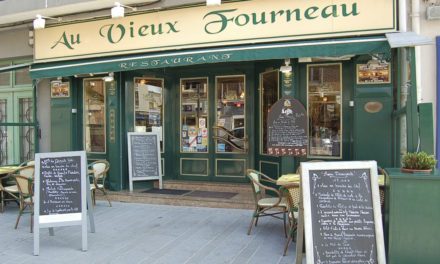Images – Copyright Atout France/Nathalie Baetens
Rouen is the capital of the Haute-Normandie (Upper Normandy) region in northern France in the department of Seine-Maritime. It lies on the River Seine and is the historic capital city of Normandy. Rouen and 70 suburban communes of the metropolitan area form the Agglomeration Community of Rouen-Elbeuf-Austreberthe (CREA). The city has a population of 110,000 and its metropolitan area includes 500,000 residents who are known colloquially as Rouennais. It is approximately 90 minutes (135km) drive northwest from the centre of Paris . A thriving industrial and commercial centre, Rouen is the third largest port in France.
Book a Hotel in Rouen
History
Historically the ancient city of Rouen was one of the largest and most prosperous cities of medieval Europe. During the 10th century, Rouen became the capital of the Duchy of Normandy and the residence of the dukes until William the Conqueror established his residence at Caen. During the Hundred Years’ War in the 15th century, Rouen played an important part in the history of France. In 1419, the city and the surrounding regions were conquered by Henry V of England of the House of the Plantagenets. In the Middle Ages it was home to the Anglo-Norman dynasties which ruled large parts of France and England from the 11th to the 15th centuries. It was in Rouen in 1431 that the English burnt Joan of Arc to death and the city was seized by King Charles VII in 1449 and returned to French control.
During the Franco-Prussian War of 1870, Rouen was occupied by the Prussians. Throughout the First World War the British used Rouen as a supply base and there were many military hospitals here. The city was heavily damaged during World War II and in June 1940 the area between Notre-Dame Cathedral and the Seine river burned for 48 hours because the Germans refused firemen access to extinguish it. More damage occurred during the Battle of Normandy which ended on the left Seine bank of Rouen with the destruction of several German regiments and many significant buildings, including parts of the cathedral. During the German occupation, the German Navy had its headquarters in a château which is now the Rouen Business School.
In the 21st century, Rouen is once again a busy and exciting city. Visitors will see a superbly restored town centre with a rich architectural heritage. The centre of Rouen is mostly pedestrianised and wandering through the medieval streets enables you to enjoy what Victor Hugo called ‘the city of a hundred spires’ at your own pace.
Attractions
Rouen’s Gothic Notre Dame Cathedral (La Cathédral de Rouen) is a stunning building dating back to the 4th century with an interesting mixture of various architectural styles including a new spire built in the 19th Century which briefly qualified it as the tallest building in the world. The cathedral was the subject of a series of paintings by the Impressionist painter Claude Monet, some of which are exhibited at the Musée d’Orsay in Paris and in the summer after dark the city puts on a Son et Lumière show projecting some of Monet’s cathedral paintings onto the façade of the building. It is famously known for its Tour de Beurre (Butter Tower) and for the tomb of Richard the Lionheart which contains his heart. Gustave Flaubert was inspired by the stained glass windows of St. Julian and of Salome which are particularly beautiful.
Rouen has some outstanding art collections amongst which the Fine Arts Museum features the second most important collection of Impressionist works in France. The Musée des Beaux-Arts de Rouen was founded in 1801 by Napoleon 1. Its current building was built between 1880 and 1888 and was completely renovated in 1994. This prestigious museum has a unique collection of works by Caravaggio, Rubens, Modigliani, Pissarro, Renoir, Sisley and several by Monet. There is also a splendid collection of faïence and porcelain for which Rouen was renowned during the 16th to 18th centuries.
Near the City Hall (Hotel de Ville), the Abbey Church of St. Ouen is an impressive Gothic Roman Catholic edifice surrounded by a park. Built between the 12th and 15th centuries, the church is famous for its original Cavaillé-Coll organ and for its breathtaking stained glass Rose window. The abbey was one of the most powerful Benedictine monasteries in Normandy and because of its size and majestic proportions, it is often mistaken for the cathedral.
Another interesting church to visit is the 15th century Gothic Church of Saint-Maclou which has a curious courtyard containing macabre woodcarvings of skulls, crossbones and gravediggers’ tools having been used as a burial ground for plague victims as recently as 1781.
Église Jeanne d’Arc is situated in the Place du Vieux Marché where Joan of Arc was burned at the stake and a 65ft high cross marks the spot. The modern church is built in a spiral shape to resemble the stakes, with a fish-scale exterior and beautiful XVI century stained glass windows. Her ashes were thrown in the Seine so people would forget her, however, she was made Doctor of the Catholic Church and Patron Saint of France – all at the tender age of nineteen.
The Palais de Justice (Law Courts) were very badly damaged at the end of World War II but have now been restored to their early 16th Gothic glory though there is still evidence of bullet holes in the 19th century western porch. The courtyard is especially interesting with gargoyles and statuary and at the eastern end is the Monument Juif (Jewish Monument). This is the oldest Jewish structure in France and the only reminder of Rouen’s medieval Jewish community.
Rouen’s main street, Rue du Gros Horloge, runs from the Cathédral Notre Dame to the Vieux Marché which is still used as the market square and from Tuesday to Saturday vegetables, fruit and flowers are sold until 12.30 pm. The Gros Horloge is an astronomical clock dating back to the 16th century in a Gothic belfry with one-handed medieval clocks on each side. Climb to the top for a fantastic view of the city.
The Jardin des Plantes de Rouen is a notable botanical garden dating from 1840 which is a place of special interest and was the site of several historic balloon ascents. A walk along the Seine waterfront takes the visitor into the heart of the thriving river port with the remaining water mills along the Rue de l’Eau de Robec testifying to the time when cloth manufacturing made Rouen one of the wealthiest cities in France.
Accommodation & Restaurants
The choice of accommodation in Rouen is plentiful with over 3,700 different hotel choices on offer. There are excellent places to stay in the centre of the city as well as hotels with river views and rural retreats in the countryside. There are also 150 restaurants and 3,000 shops to welcome you – Rouen is a centre of gourmet excellence with great shopping opportunities.
Les Maraîchers is a famous bistro established in 1912 and classified as a café historique d’Europe. It has a genuine zinc bar, polished wood floors, gleaming mirrors and a warm, friendly French atmosphere. The cuisine is traditional and includes Normandy-raised beef dishes.
Another classic Rouennaise brasserie, famous for its artistic clientele for over a century, is the Brasserie Paul. Favoured by artists and philosophers with a style which remains unchanged with plush red seats and overhead fans, the menu is full of appetising dishes including Simone de Beauvoir’s favourite smoked duck salad.
Les Nymphéas offers traditional French food based on fresh local ingredients (including cider and calvados) in a formal dining room under 16th century beams.
Hôtel de Bourgtheroulde is a five star boutique hotel located in Rouen’s historic centre and housed in one of the city’s magnificent French mansions. It is a stylish 16th century Heritage listed building which combines modern comfort and technology with stylish luxury. The Restaurant d’Aumale offers French gastronomy at its finest, alternatively, the Brasseries des Rois has an excellent menu where you can relax with a glass of wine.
Mercure Rouen Centre Cathédrale (4*) is located next to Notre Dame Cathedral in the centre of the city and therefore within easy walking distance of the old market and the shopping district. It offers a full breakfast and guests can enjoy a drink in the hotel bar. Hôtel de la Cathédrale at 12 Rue St. Romain is a traditional timber-framed building dating from the 17th century, with a pretty courtyard where guests are invited to enjoy breakfast when the weather permits or by the fireplace when warmth and comfort are more welcome.
Transport
Transportation within Rouen consists of a tram and a bus system. The tramway branches into two lines through a tunnel under the city centre.
By air: Rouen has its own airport serving inland domestic routes as well as international destinations.
By rail: Mainline trains operate from Gare de Rouen Rive Droite to Le Havre and Paris. and regional trains go to Caen, Dieppe and other local destinations throughout Normandy. Direct trains go to Amiens and Lille and TGVs connect daily with Lyon and Marseille.
By car : From Paris the fastest route is via the A13 motorway (with a toll). Alternatively, take the N14 . From the Channel port of Dieppe, Rouen is approximately an hour’s drive 66km south the N27. From the French end of the Eurotunnel (Calais), Rouen is approximately a 2 hour drive (208 km) using the E402.
Tourist Office
OT de la Communcauté de Rouen Vallée de Seine
25 Place de la Cathédrale, 76008
Rouen

